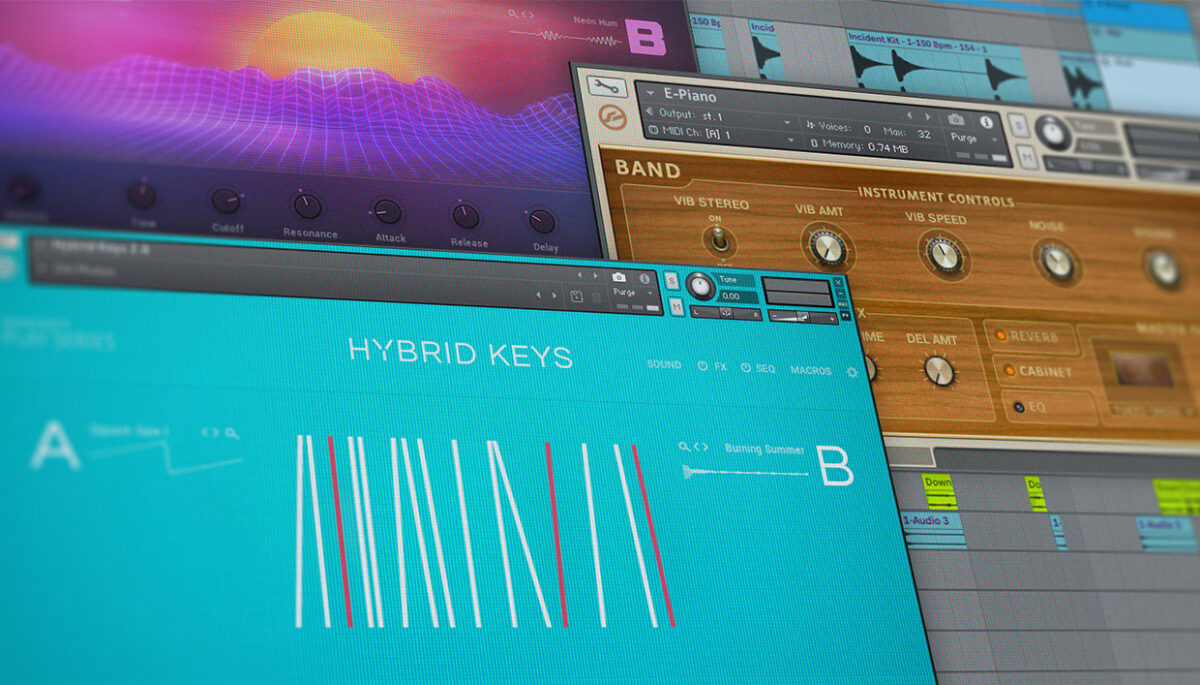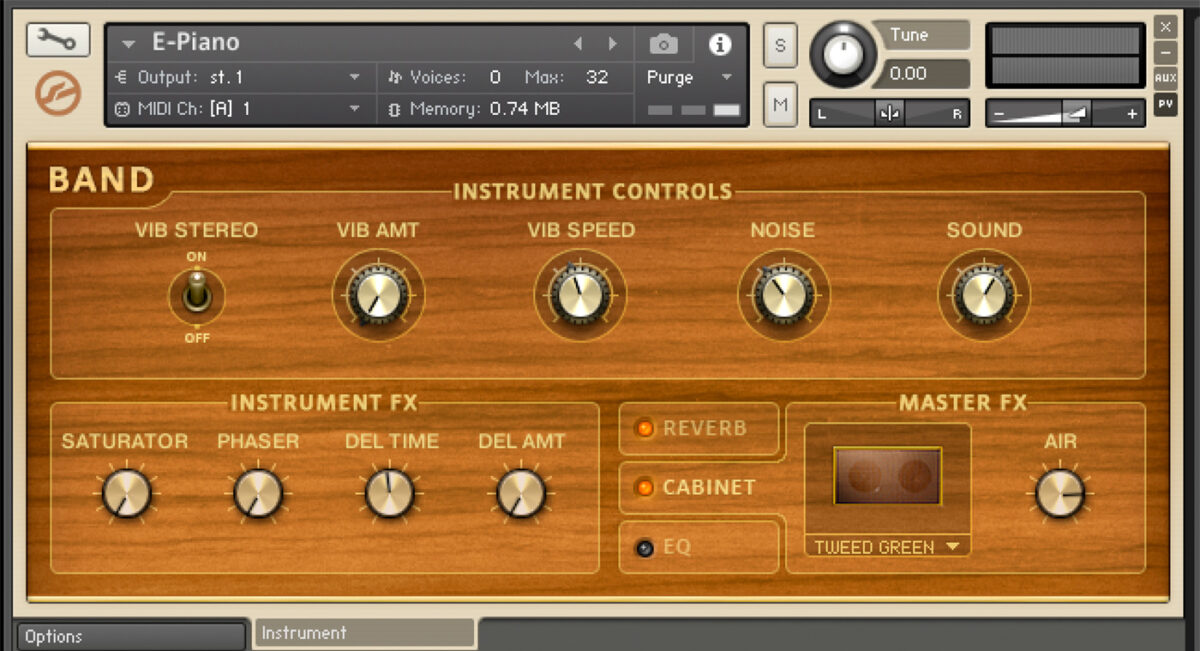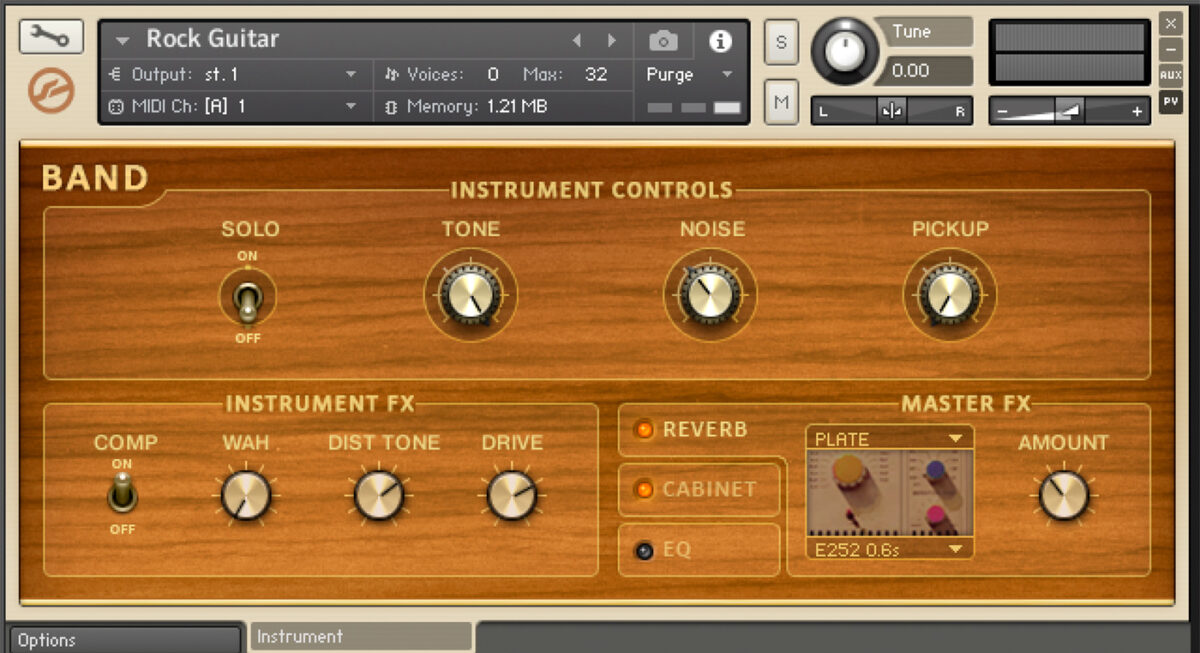
When you’re writing or producing a track, a crucial aspect of your songwriting will likely be the chord progression you use. And the choice of which chords you use will have a massive impact on the mood, energy and structure of your song. We’re going to talk about choosing the most popular and energetic chords—major chords.
We’ll explore what major chords are, how examples of common major chord progressions in popular music have captivated listeners, and how to approach adding them to your songs.
Jump to these sections:
Follow along with this tutorial using Komplete Start, a free bundle of instruments, sounds, and synths to get you started producing your own music.
What are major chords?
Chords consist of three notes played simultaneously. When we talk about major chords, we are talking about chords that are made up of notes of a major scale. Most often, a chord is made up of the first, third and fifth notes of that scale. That means a major chord is based on notes relative to the note that gives the name to that chord—the root. For example, a C major chord would be based on a C note, plus the notes that lie at the third and fifth steps of the C major scale. A G major chord would be based on a G note, plus the steps relative to a G major scale.
You might be able to discern that there is a strong relationship between the notes of a scale and the notes that make chords—this is absolutely true. In fact it goes deeper, the chords in a progression will nearly always be modeled on the notes in one scale. When we talk about the “key” of a song, we are talking about the notes that are used in both the melody AND the chords. So a song in the key of C major will have a C major chord progression, or chords made up of the notes in a C major scale.
So we’ve looked at what a major chord is—and we’ve looked at how those chords are defined by the notes of a “key.” Let’s now look into which chords we can use that fit in a major key. Here’s something very cool—every major key includes chords that are actually minor chords. This may sound confusing—if a “key” is based on a major scale, isn’t everything in that key also a major key? Not exactly, because a chord is based on the notes available in the scale, and follows the makeup of root-third-fifth, it will contain combinations that aren’t strictly major chords, but fit nicely in a major chord progression. This will make more sense in our examples below.
Let’s look at a few examples of basic major chord progressions you can use, and how they appear in some great songs you probably know.
1. I-V-IV-V
Suzanne Vega has been a tremendously successful songwriter, with several of her songs being the basis of very successful dance records. Her highest charting and most successful hit is “Luka”—which combines a very sad lyrical subject with the light and playful chords of F# major to great effect.
Vega uses melody beautifully here—allowing the simplicity of the melody to be anchored by the most stable chords of the F# major key. The “tonic” chord (I) of F# is followed by the fifth chord degree (V) C# chord, (with a slight variation of a suspended 4th chord) and then the B, which is the fourth chord degree (IV), also in a suspended variation.
Here’s how those chords show up in a piano roll in our DAW. And an example of how those chords sound when played through. When the melody arrives, it becomes easy to understand how the chord progression links everything together.

We can use these chords to play a really nice patch in Band—which is included in Komplete Start, and is totally free to anyone. Here’s the patch in Band.

Remember when we mentioned above how a song in a major key can have chords that are not actually major? This song offers a great example.
When the song gets to the chorus, we hear a D# minor chord (vi) instead of the tonic chord in the original progression. This is a great way to add some difference to a chorus, and some tension to the structure. So the chorus follows a vi-V-vi-V-IV-V-IV-V. The absence of the root chord, and the tension provided by the minor chord allow the song to resolve back to the root chord that anchors the verse and the main melody.
2. IV-iii-vi-V
Daft Punk—Digital Love
There’s no doubt, Daft Punk are famous for their arsenal of absolute bangers. And while many of their top hits feature samples, don’t mistake that to mean they don’t choose their chords wisely. Especially when Daft Punk want to shift to a more optimistic and pop-friendly mood, they know how a major chord progression can fit the job. Let’s listen to “Digital Love” from their Discovery album.
The main progression bounces along hitting bright upbeat chords to maintain the optimistic energy of the song. Interestingly, it never resolves to the root, or “tonic” chord. The tonic chord is the chord based on the root note of the key, which, in this case would be A major. For most chord progressions, the tonic chord is the place that all progressions are anchored. It often gives a resolution, and allows a progression to circle back again. But in this song, we never reach that resolution, keeping a heightened sense of excitement and longing. We start the progression with the IV chord, of D major, and then into minor chords within this key—the third chord degree with c#min and the sixth with f#min then landing on the major chord of E.
Here are how those chords look in our DAW, and a sample of how they sound played in Analog Dreams, which is also available totally free in Komplete Start.


When we get to the chorus, those chords are roughly the same, with just some small shifts in timing, and dropping out the last V chord.

3. I-V-vi-iii-IV-I-V
The great thing about chord progressions is that they can often be so flexible they can work in any genre. A chord progression that’s based on the right ingredients will translate across many genres and sound good on all kinds of instruments. Take for example Green Day’s “Basket Case.”
The song is in the key of E flat major, and so it starts with the anchor point for chord progressions—the tonic, based on the root note of E flat. It jumps to the next most stable chord in our key—the V chord, or the fifth chord in the major sequence, B flat, jumps to a C minor at the 6th (vi) position in the key, then the third (iii) chord, a G minor, then an A flat major which is the fourth (IV), then back to the tonic (I) and back to two measures on the fifth (V) of B flat. This movement from the tonic to the fifth (sometimes called the dominant), around to less stable chords and back to the tonic is a very common way of keeping motion in a song.
This is how those chords sound in a different sort of instrumentation, and slightly different pattern. We can make a crunchy guitar-like sound in Band from Komplete Start.
And here you can relate it back to Green Day’s version when we pair those chords with the melody. Here’s how the midi looks in our DAW, and a look at the patch we’re using in Band.


This is another case where the chords make a lot more sense when we combine them with the melody. So listen to the first bar of just the chords, and keep listening to hear the melody over top of them.
4. I-V-vi-IV
There are popular chord progressions, and then there is THE popular chord progression. As you can tell by this video by Axis of Awesome, one chord progression has been at the foundation of so many massively popular songs that it’s impossible not to discuss. This progression has all the key elements of a great progression, with shifts, tension and resolution, and a familiarity that makes it feel like you already know a song the first time you’ve heard it.
So let’s try this progression in C major, and see how it sounds. Here’s how the midi looks in our DAW, which we’re using with Hybrid Keys, another great instrument included in the totally free Komplete Start.


And now let’s hear how that progression sounds in Hybrid Keys from Komplete Start.
It already feels like the beginning of a great pop song! See if you can sing a melody you’d like to add over these chords. You don’t even need to know any scales, just let your intuition guide you…!
One beautiful thing about this progression is that it is still wildly effective with changes in sequence. You’ll find familiarity and resolution in any variation of this progression. Using a major key will help you keep it bright and upbeat, while still retaining mystery and tension, but resolving to hopeful, uplifting moments.
Start using major chords in your music
We’ve seen how major chords are behind the progressions of a bunch of our favorite songs, and we’ve seen how those basic chord progressions progressions can incorporate a lot of great ideas, and support many different genres. See if you can try applying those to your next project, and get started making music with the free instruments included in Komplete Start.















